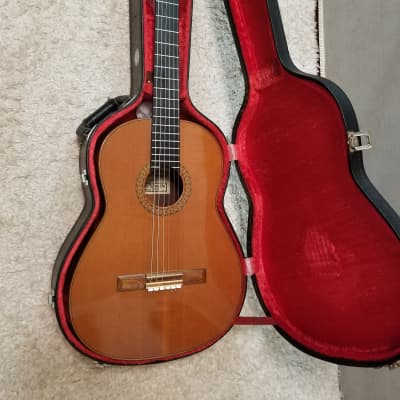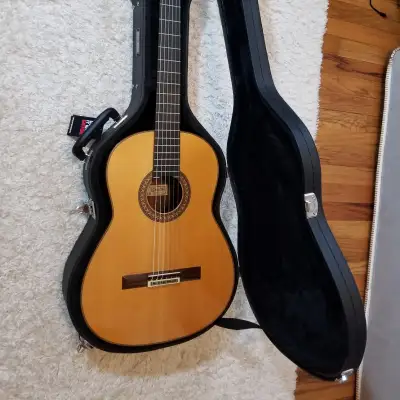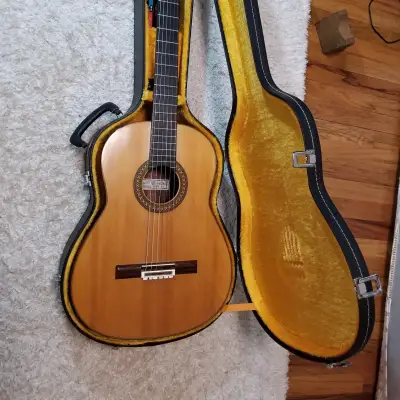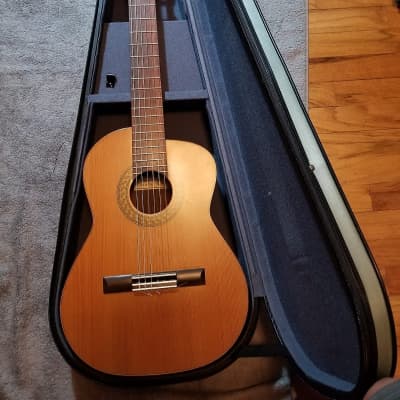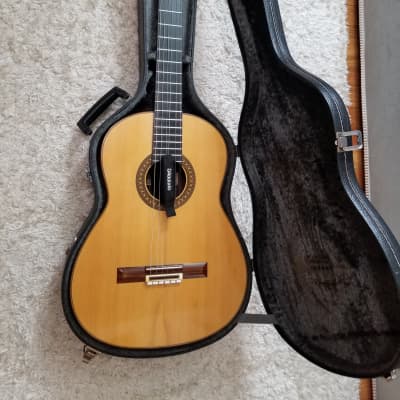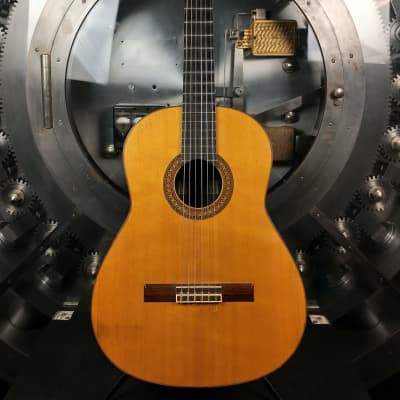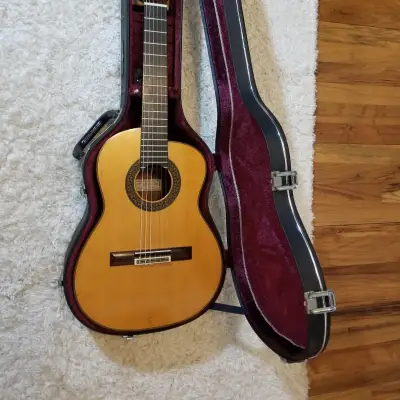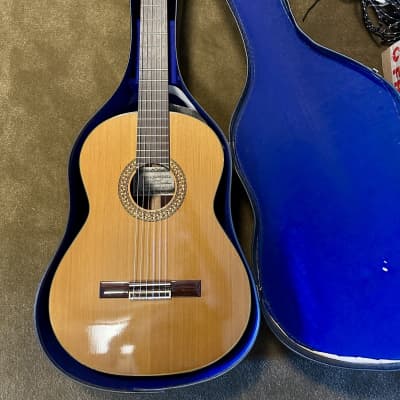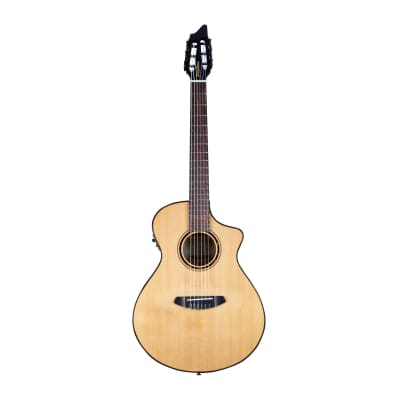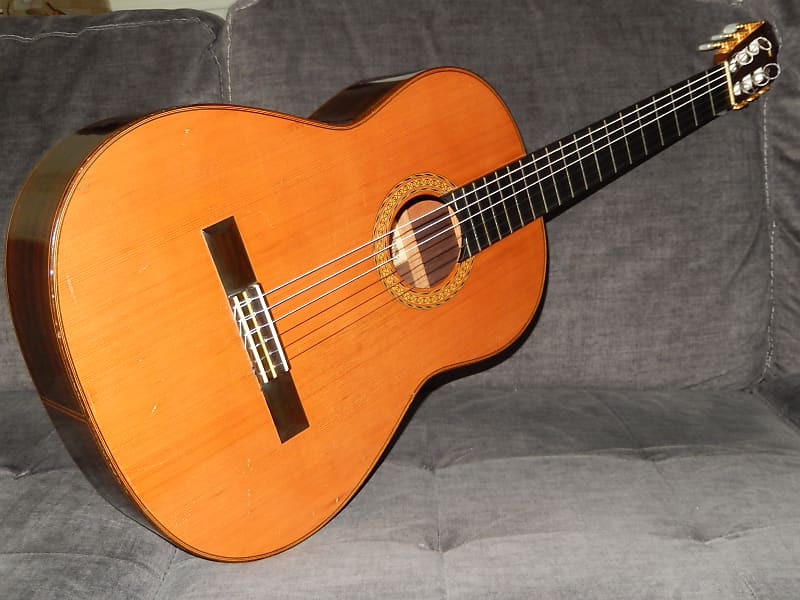

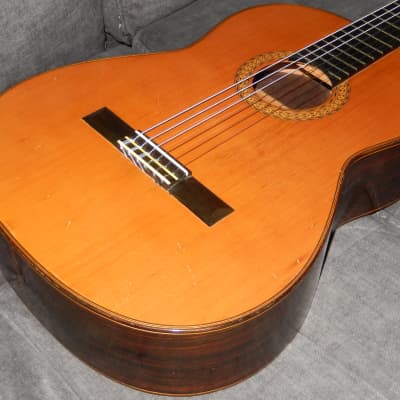
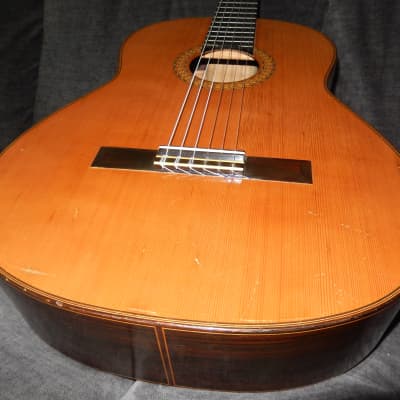
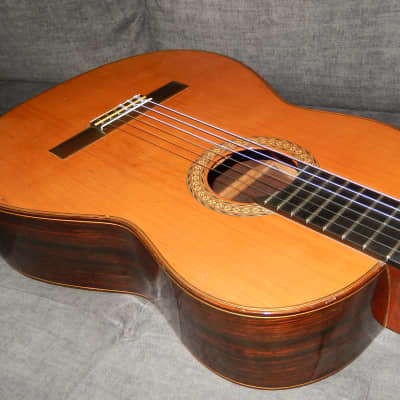
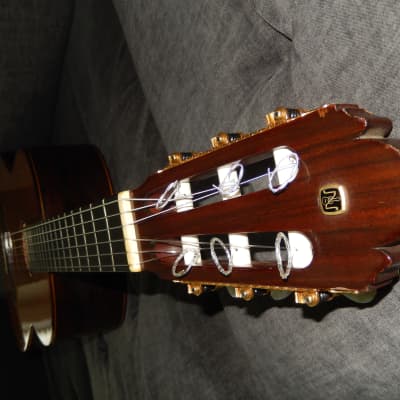
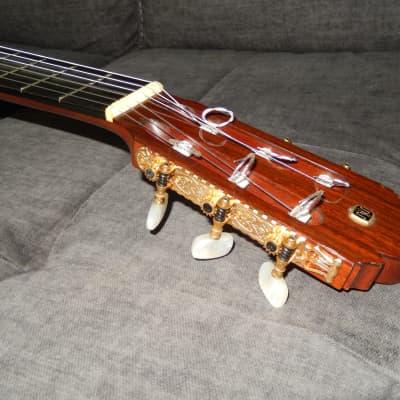
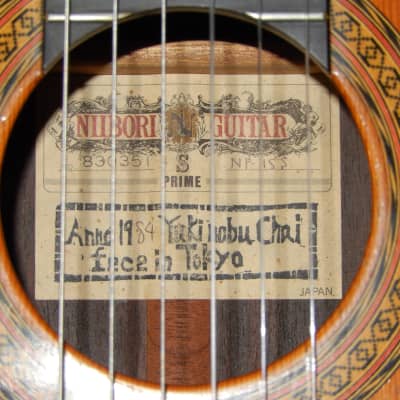
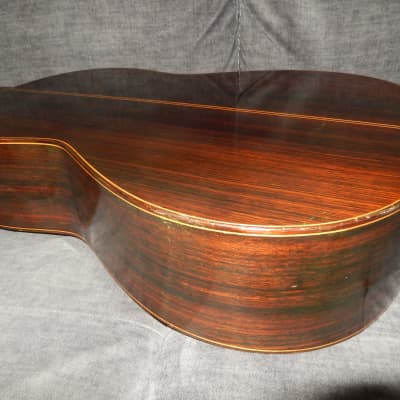
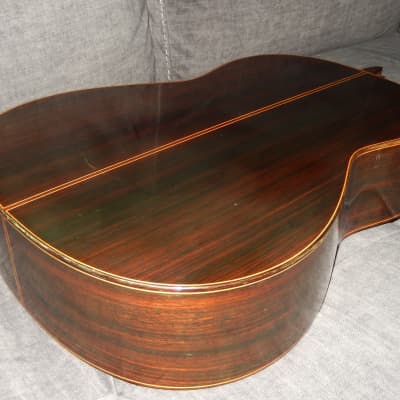
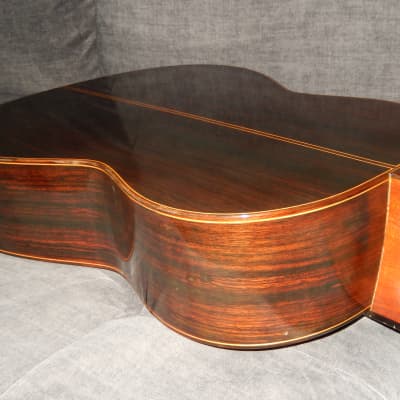
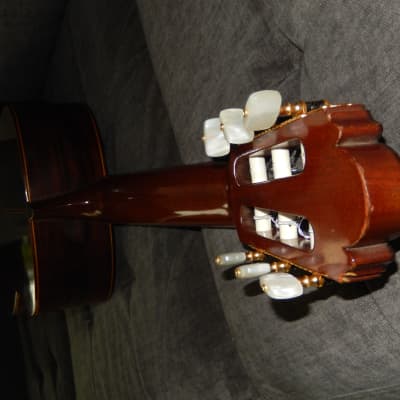
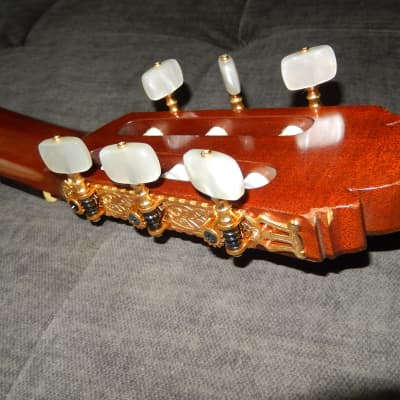
Yukinobu Chai Classical Concert Guitar NP-15S
This guitar was ordered by Nibori Music Academy and made in 1984 by Master Luthier Yukinobu Chai. Yukinobu’s career started in late 1960s and over the years he became one of the highest respected luthiers in Japan. Most likely the major reason for that were very moderate prices for his wonderful instruments.
In that respect Yukinobu had business philosophy very similar to that represented by Ryoji Matsuoka, Kazuo Yairi or brothers Hiroshi and Mitsuru Tamura. In 1983 top Masaru Kohno model 50 or Sakazo Nakade Master 50 were priced 500 000 yen. In 1984 top Masaru Kohno model Maestro or Sakazo Nakade Master 80 were priced 800 000 yen. By 1985 Yukinobu Chai and Tamura brothers were still pricing their top models at 500 000 yen even though their instruments sounded no different than those made by the “elite” luthiers. In 1985 top R.Matsuoka models were M200 & MH200. Kazuo Yairi's top model was YC200.
In early/mid 1970's Yukinobu was still relatively unknown luthier and his prices were actually lower than those proposed by Tamura brothers for similar grade guitars. Until 1974 Yukinobu's model 10 was made with solid figured Brazilian Rosewood b/s.
Over the years of his career Yukinobu has made very many guitars for Nibori School of Guitar Ensemble. They were not only Prime (regular), but also Alto, Bass and Contrabass guitars. 2 other great Japanese luthiers frequently hired by Mr. Nibori, were Sumio Kurosawa and Saburo Nogami. Yukinobu Chai however, was Nibori’s #1 supplier.
In 1983 Yukinobu’s model NP-15S was priced the same 150 000 yen as Kohno 15 (which in 1985 was renamed to model Professional R and priced 200 000 yen). Just like many other less influential Japanese luthiers of that era, Yukinobu had to offer much more for the same price. So he did.
This guitar remains in very good structural and functional condition. Its cosmetic condition can be described as "close to terrible". It’s top bears multiple dents, scratches and bruises (some quite deep), abrasions and small cracks in the finish, but no cracks through the wood. Its back and sides are in somewhat better visual condition, although with mild cloudiness of the finish. There are also few minor dents and abrasions on the headstock and the back of the neck.
If it was in mint condition, I would price this guitar 3 times higher, knowing that can easily beat all $5000 guitars sold by US music stores.
This guitar offers great volume and response, combined with very charming sweet tonality: sweet & very colorful trebles, somewhat metallic & deeply resonating basses, all well balanced, with great note clarity and separation, and all with very impressive sustain. It is simply a “joy to play”.
Specifications:
Top: Solid Cedar/lacquer
Back & Sides: SolidRosewood/lacquer
Neck: Mahogany
Fingerboard: Ebony
Scale: 650 mm
Nut width: 51 mm
Its action is set to 4.00 mm under E6 and 3.50 mm under E1, with practically no extra room on the saddle.
This guitar will be shipped in lightly used hard-shell case.
Real Value of Japanese Vintage Guitars
The key to understand value of vintage Japanese guitars is to acknowledge galloping devaluation of Japanese yen in 1960s & 1970s. This devaluation was somewhat slower in 1980s. The best measure of this devaluation is Starting Yearly Salary of Japanese College Graduate (SYSJCG).
SYSJCG in 1965 was 19 600 yen, in 1969 – 34 600 yen, in 1970 39 200 yen, in 1972 – 62 300 yen, in 1975 79 200 yen, in 1977 86 200 and in 1980 - 100 000 yen.
During 1960s and most of 1970s model numbers of Japanese guitars were strictly interconnected with their prices in Japanese yen. In late 1970s and during following decades model numbers were no longer strictly associated with their prices. Many Japanese guitar makers introduced model names instead of model numbers. Others were still using model numbers with addition of letter abbreviations or other symbols.
The best and only logical approach while evaluating real value (real grade) of vintage Japanese guitar is to compare its price in Japanese yen with SYSJCG during the year guitar was made.
Any guitar priced 100 000 in 1970 (labelled usually as No10) would be priced 200 000 yen in 1975 (relabeled to No20 or 2000), 300 000 yen in 1977 (labelled as No3, No30 or 3000). Starting in 1977 Masaru Kohno introduced his new models No40 priced 400 000 yen and No50 priced 500 000 yen. By 1984 Kohno started using model names instead numbers and was raising their prices as he was pleased. Model 50 became model “Maestro”, model 40 became model “Special”, model 30 became model “Professional-J”. Naturally other Master luthiers were doing the same name/price changes.
Knowing all of that, you can bet on that Masaru Kohno No50 made in 1982 is practically the same grade instrument as Kohno No20 made in 1972, or Kohno no 30 made in 1976. Kohno No40 made in 1982 is exactly the same grade instruments as Kohno No15 made in 1972 or Kohno No20 made in 1975.
It is very important to mention that if modern era luthiers are using 40 years old woods to make a classical guitar, its price is at least $8000.
Reverb Buyer Protection
Reverb has your back if your item is lost, damaged, or doesn't match its description. Simply report any issues within 7 days and we'll help you get a full refund.Learn more about Reverb Buyer Protection.
| Listed | 5 years ago |
| Condition | Fair (Used) Fair condition gear should function but will show noticeable cosmetic damage or other issues.Learn more |
| Brand | |
| Model |
|
| Finish |
|
| Categories | |
| Year |
|
| Made In |
|
| Body Shape |
|
